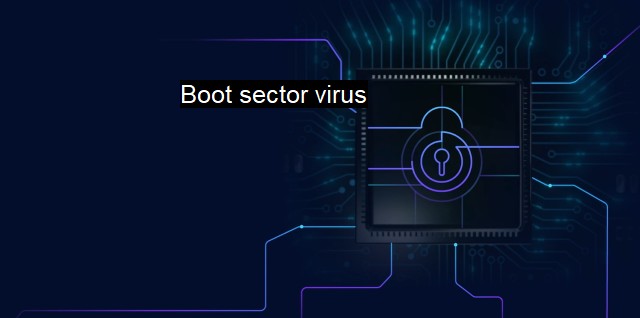What are Boot sector virus?
Protecting Your Business From Boot Sector Viruses: The Critical Role of Cybersecurity in Preventing Malware Attacks
The term “boot sector virus” refers to a distinct sort of malware that infects the startup sectors of storage media like hard drives, floppy disks, or even USB drives. These threats have severe implications on system operations since they load into memory each time the system starts and stays in effect until the system is shut down. It’s an old type of computer virus, first witnessed in the 1980s as personal computers became commonplace. Despite its age, this type of virus remains a serious threat, especially for unprotected systems, and falls under the purview of cybersecurity and antivirus measures.The ‘boot’ sector is essentially the sector that contains the information necessitated by your computer to boot up, inclusive of details about the system files. Due to its importance, any intrusion within this sector by these viruses can jeopardize the whole process of your computer system.
Boot sector viruses operate by replacing the boot code on a hard drive, typically with their own malevolent version. When the system is started, the virus is the first thing to load into memory, which ensures that it’s deployed before the operating system or any protective software has the opportunity to perform a scan or effect any preventive measures. Such accessibility at the startup gives these viruses the power to control and manipulate the system effectively, altering data, corrupting files, or performing other malicious activities.
When a boot sector virus establishes itself in a system, it typically copies the original boot code to another location, because the original boot code is still needed to load the operating system. To infect other systems or other portions of the same computer, these viruses usually hide themselves in the system memory and infect any removable media that are inserted into the inclusive system.
Boot sector viruses have marked their existence on both Windows-based and Macintosh computers, highlighting no operating system can completely stay unaffected by such intrigue inspite of regular updates and improvement on security features. They can cause numerous damage; examples being the infamous Michelangelo virus wreaked havoc on computer data, especially on March 6th, bad sector creation, master boot record manipulation, disk format simulation, and root directory disordering.
For countering such threats, a strong antivirus program acts as the chief line of defense. Antivirus protection software is adept at detecting unusual or malicious activities on a computer, alerting users to any probable concerns and generally removing or isolating threats before they can cause any potential harm. boot sector antivirus software often incorporates useful tools for repairing or rebuilding damaged boot sectors, and usually offer prevention tips and techniques.
Frequent updates of the antivirus programs are necessary to ensure that the system is shielded from the latest forms of these viruses and that the delivered protection is in line with the overall risk landscape. Also, refraining from bridging connections with insecure networks, exercising caution when using external drives that might be infected, and regularly backing up vital data are all necessary incremental steps towards safeguarding a system from boot sector viruses.
In today's cyber-oriented world, boot sector viruses represent a lingering shadow from the past - a constant reminder that even foundational components of a system can be exploited. These threats underline the importance of sound cyber practices as part of everyday computer usage, the practice of cybersecurity hygiene, and the relentless evolution of preventive measures by cybersecurity vendors geared to tackle the evolving threat landscape. With the right protective steps and continuous vigilance, the risk from boot sector viruses can be minimized, and computers can continue their operations in a substantially secure environment. Whatever the future amasses for cybersecurity challenges, the history, and impact of boot sector viruses will remain a notable part of our cyber landscape.

Boot sector virus FAQs
What is a boot sector virus?
A boot sector virus is a type of virus that infects the boot sector of a computer's hard drive. It typically spreads through infected disks or through downloading and installing infected software.How does a boot sector virus work?
A boot sector virus infects the boot sector of a computer's hard drive, which is the area of the disk that contains the code that is executed when the computer starts up. Once infected, the virus can spread to other areas of the disk and potentially to other connected devices. It can cause a variety of issues, including slowing down the computer or making it unusable.What are some symptoms of a boot sector virus?
Some symptoms of a boot sector virus include slow performance, unusual error messages, files being deleted or corrupted, and strange behaviors such as programs opening or closing on their own.How can I protect my computer from a boot sector virus?
You can protect your computer from a boot sector virus by using a reputable antivirus program, avoiding downloading and installing software from untrusted sources, and being cautious when inserting external media such as USB drives or CDs into your computer. It is also important to keep your operating system and other software up to date with the latest security patches.| | A | | | B | | | C | | | D | | | E | | | F | | | G | | | H | | | I | | | J | | | K | | | L | | | M | |
| | N | | | O | | | P | | | Q | | | R | | | S | | | T | | | U | | | V | | | W | | | X | | | Y | | | Z | |
| | 1 | | | 2 | | | 3 | | | 4 | | | 7 | | | 8 | | |||||||